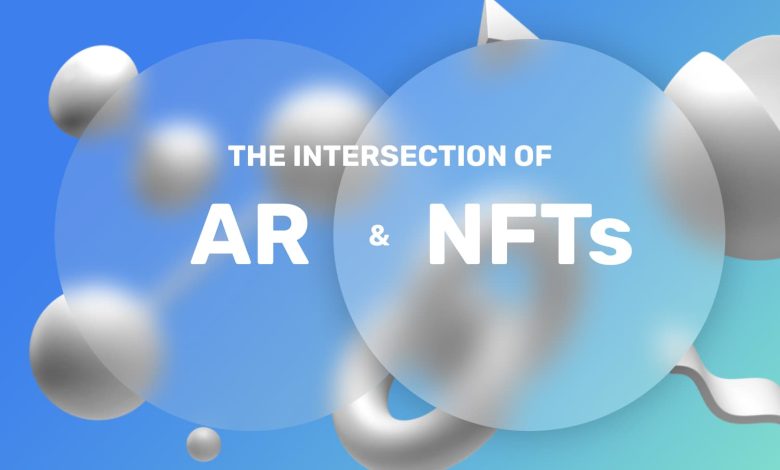NFTs and Augmented Reality

- Exploring the intersection of NFTs and Augmented Reality
- The future of digital art: NFTs and Augmented Reality
- How NFTs are revolutionizing the world of Augmented Reality
- Creating immersive experiences with NFTs and Augmented Reality
- Unlocking new possibilities with NFTs in Augmented Reality
- The synergy between NFTs and Augmented Reality
Exploring the intersection of NFTs and Augmented Reality
The intersection of NFTs and Augmented Reality (AR) opens up a world of possibilities for digital art and collectibles. By combining the unique properties of NFTs with the immersive experience of AR technology, creators can offer a new level of engagement to their audience.
One of the key benefits of merging NFTs with AR is the ability to bring digital assets to life in the physical world. Users can use their smartphones or AR glasses to view and interact with NFTs in real-time, creating a dynamic and interactive experience. This not only enhances the value of the NFT but also provides a new way for collectors to showcase their digital assets.
Furthermore, the integration of NFTs and AR can also open up new revenue streams for artists and creators. By offering AR-enabled NFTs, creators can attract a wider audience and potentially increase the value of their digital assets. This can lead to collaborations with brands, galleries, and other partners looking to leverage the unique combination of NFTs and AR.
Overall, the exploration of the intersection between NFTs and AR represents an exciting frontier in the world of digital art and collectibles. As technology continues to evolve, we can expect to see even more innovative uses of these two mediums coming together to create truly immersive and engaging experiences for users.
The future of digital art: NFTs and Augmented Reality
The future of digital art is being reshaped by the emergence of NFTs and Augmented Reality (AR). These technologies are revolutionizing the way artists create, distribute, and monetize their work. NFTs, or non-fungible tokens, are unique digital assets that are stored on a blockchain. They allow artists to create limited edition pieces that can be bought and sold on online marketplaces. AR, on the other hand, enables artists to overlay digital artwork onto the physical world using a smartphone or AR glasses.
NFTs have opened up new possibilities for artists to reach a global audience and connect directly with collectors. By tokenizing their work, artists can ensure authenticity and provenance, while also receiving royalties every time their piece is resold. This has the potential to disrupt the traditional art market and empower artists to take control of their careers.
Augmented Reality is also transforming the way we experience art. By using AR technology, artists can create immersive and interactive artworks that come to life when viewed through a smartphone or AR device. This allows for a more engaging and dynamic art experience, blurring the lines between the physical and digital worlds.
In conclusion, the combination of NFTs and Augmented Reality is shaping the future of digital art in exciting new ways. Artists now have the opportunity to explore innovative techniques and reach a wider audience than ever before. As these technologies continue to evolve, we can expect to see even more groundbreaking developments in the world of digital art.
How NFTs are revolutionizing the world of Augmented Reality
NFTs have been making waves in the world of augmented reality, revolutionizing the way we interact with digital assets. These non-fungible tokens are unique digital assets that are stored on a blockchain, making them secure and tamper-proof. By leveraging NFTs, developers can create one-of-a-kind AR experiences that users can interact with in real-time.
One of the key ways NFTs are transforming the world of augmented reality is by enabling the ownership and trading of digital assets. With NFTs, users can purchase and own virtual objects, such as artwork or collectibles, and display them in their AR environments. This ownership gives users a sense of exclusivity and value, driving engagement and interest in AR experiences.
Furthermore, NFTs allow for the creation of unique AR experiences that can be customized and personalized to individual users. By tokenizing digital assets, developers can create limited edition AR content that can be bought, sold, and traded on the blockchain. This opens up new possibilities for monetization and creativity in the world of augmented reality.
Creating immersive experiences with NFTs and Augmented Reality
By combining NFTs with Augmented Reality (AR), creators can develop truly immersive experiences for users. NFTs provide a unique digital asset that can be tied to physical objects or locations, enhancing the AR experience. Through the use of blockchain technology, these digital assets can be securely stored and verified, adding a layer of authenticity to the AR content.
Imagine walking through a museum and using your smartphone to view AR displays that are enhanced by NFTs. These digital assets could unlock additional information, animations, or interactive elements, creating a more engaging and educational experience for visitors. By leveraging NFTs and AR together, creators can push the boundaries of traditional storytelling and create new opportunities for audience engagement.
Furthermore, NFTs can also be used to create limited edition AR experiences that are exclusive to certain collectors or participants. This scarcity adds value to the digital assets and can drive interest and demand for the AR content. Collectors may be willing to pay a premium for access to these unique experiences, further monetizing the content for creators.
Unlocking new possibilities with NFTs in Augmented Reality
NFTs have opened up a whole new world of possibilities when combined with Augmented Reality (AR). By leveraging the unique properties of NFTs, creators can now unlock a whole new dimension of interactive experiences for users.
With NFTs in AR, digital assets can be tied to physical locations or objects, creating a seamless blend of the virtual and physical worlds. This opens up a wide range of opportunities for storytelling, gaming, marketing, and more.
Imagine being able to explore a virtual art gallery in the real world, where each piece of art is an NFT that you can collect and display in your own AR space. Or playing a location-based game where NFTs unlock special powers or items as you move through different areas.
By combining NFTs with AR technology, creators can offer users a truly immersive and interactive experience that goes beyond what was previously possible. This fusion of digital assets and augmented reality has the potential to revolutionize how we interact with the world around us.
The synergy between NFTs and Augmented Reality
When it comes to the world of digital assets, the synergy between NFTs and Augmented Reality is a match made in heaven. NFTs, or non-fungible tokens, have taken the art and collectibles world by storm, offering a unique way to buy, sell, and trade digital assets. On the other hand, Augmented Reality (AR) technology has the power to bring these digital assets to life in the physical world, creating an immersive and interactive experience for users.
By combining NFTs with AR, creators and collectors can unlock a whole new level of engagement and value. Imagine being able to view your NFT art collection in your own home through your smartphone or AR glasses, or attending a virtual gallery where you can interact with digital artworks in a 3D space. The possibilities are endless when it comes to merging these two cutting-edge technologies.
Not only does the integration of NFTs and AR enhance the user experience, but it also opens up new opportunities for artists, brands, and businesses. For artists, NFTs provide a way to monetize their digital creations, while AR offers a platform to showcase their work in innovative and captivating ways. Brands can use NFTs and AR to create unique marketing campaigns and immersive experiences for their customers, driving engagement and loyalty.



